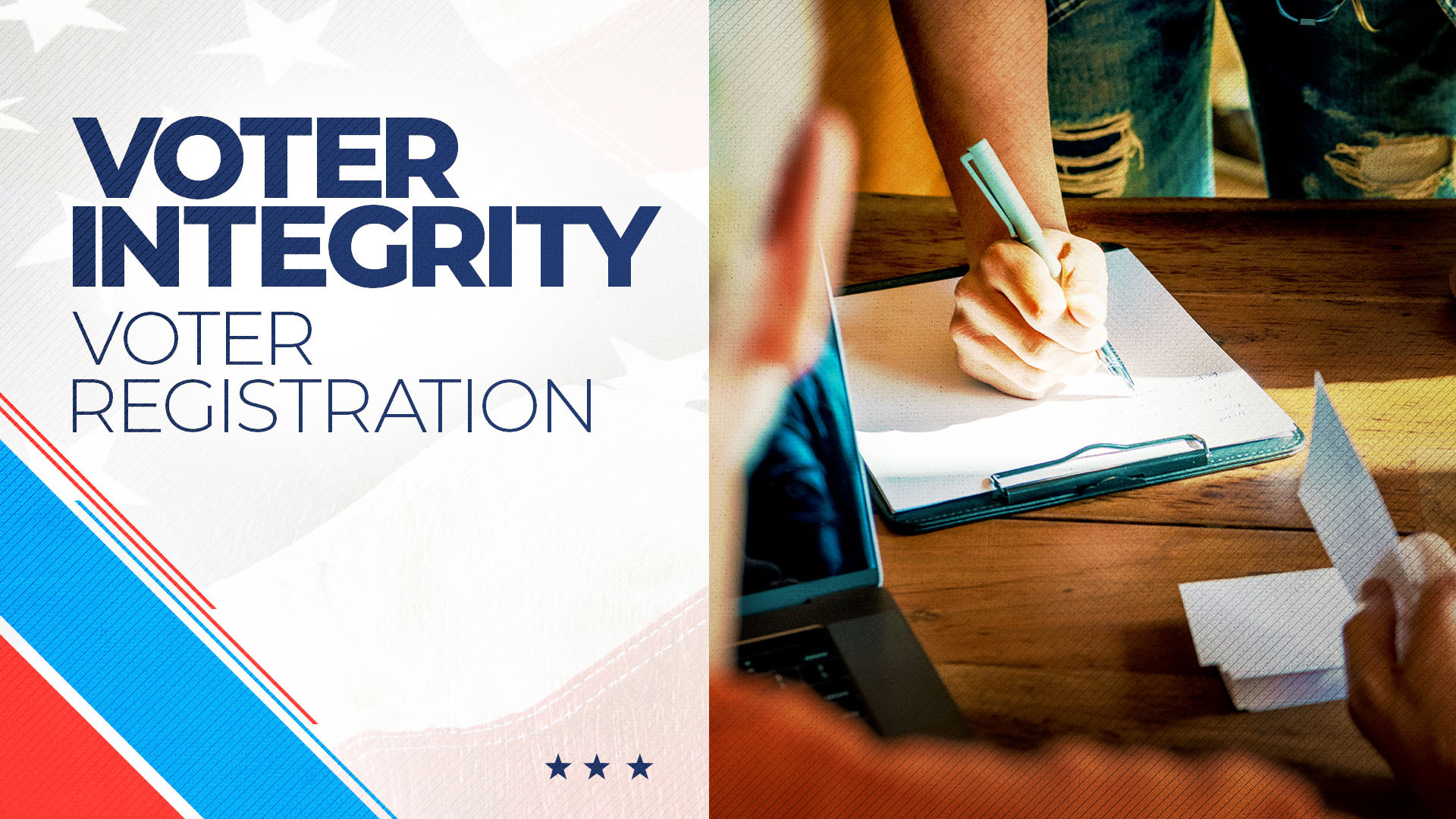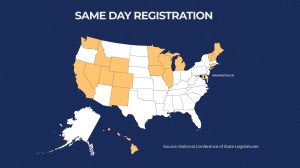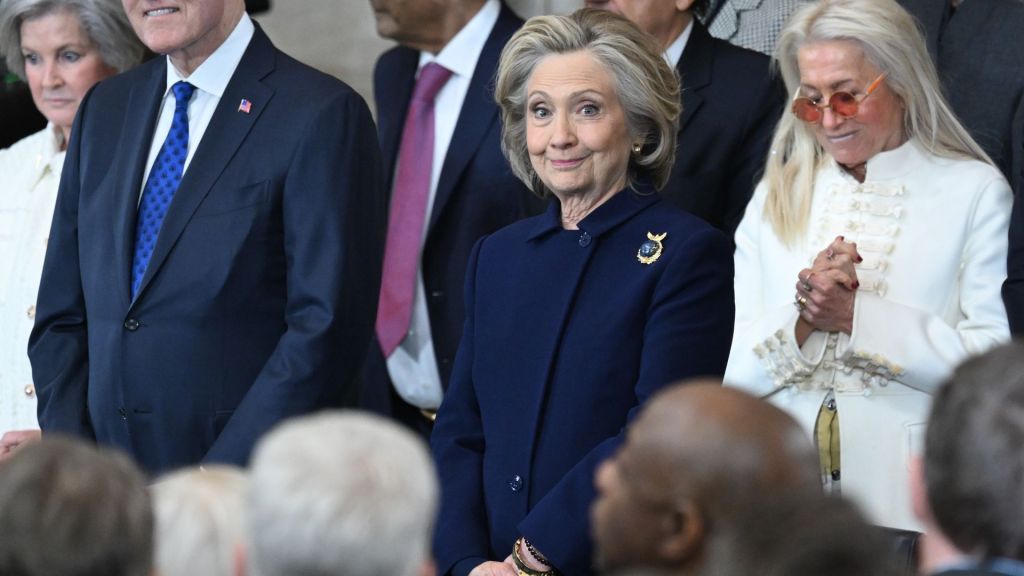
Commentary
-
Our commentary partners will help you reach your own conclusions on complex topics.
Voter registration. It’s the first step citizens take to exercise their right to vote. But the rules and requirements vary from state to state.
Here to explain is Straight Arrow News Contributor Professor Daron Shaw.
Shaw says: “It’s important to remember that we do not register nationally in the United States. Rather we register at the level of the county. County level registration ensures voters are assigned to precincts so that they are voting for people who will actually represent them in government.”
But first – why are voters required to register?
Shaw says: “If voters are registered to vote it’s easier to prevent them from voting multiple times, from voting in an incorrect jurisdiction or making some other such area, either intentionally or otherwise.”
42 states and DC offer online registration.
The rest require applications by mail or in person.
To complete your registration, you need proof of residency. That includes a drivers license, a paycheck or utility bill, among other options. Next, you need a photo ID, or your social security number.
Shaw says: “So even in states that don’t require Voter ID in order to vote, in order to register you do have to provide a photo identification.”
Finally – when can you register?
In 30 states, there are set deadlines – usually 8 to 30 days before the election.
20 states plus DC offer same day registration. Meaning you can walk into the polling location, register, and cast your ballot on election day.
Shaw said: “So if you think of voting as a two step process in the united states, first you have to register then you have to cast a ballot, that first step is essentially done simultaneously with the second step. So it really is a one step process.”
To learn about state specific deadlines and requirements visit vote.gov. For more information on voting and elections in America, continue watching our series on youtube or straightarrownews.com.
-
Campaign finance: Money and politics’ relationship gets stronger
Money and politics go hand in hand and the totals going back to 2008 reveal the relationship is only growing stronger. In 2020, spending in federal elections totaled $14.4 billion. It’s been increasing for more than a decade: 2016: $6.5 billion 2012: $6.3 billion 2008: $5.3 billion Does money drive election results? Empirical analysis shows… -
Voter ID: Facts and myths of identifying yourself at the voting booth
There’s an awful lot of debate about voter identification. Some fact, some fiction and a surplus of opinions. But what are the rules surrounding voter ID? Does it impact turnout? This article answers all those questions, but to sum it up: we certainly don’t have compelling evidence that there’s much to be gained from these… -
Electing our leaders: How election systems differ around the world
Free and fair elections are the foundation of democratic societies. But not all elections are the same. There are two main types of election systems: single member, simple plurality, or SMSP, and proportional representation. This article will explain how they both work and how they correspond to elections in the United States and around the… -
Same day, automatic registrations simplify voting in America
Voting in the United States is largely a two-step process. First you register, then you vote. But two options make voting a one-step process: same day registration and automatic registration. “The United States is somewhat distinct compared to other democracies in that we require voters for the most part to register prior to election day…
Latest Stories
-
 SRC Defense
SRC Defense
The warfare potential of SRC’s Ghost Mantis: Weapon of the Week
-
 Rheinmetall
Rheinmetall
US Army continues modernization with new IFVs on the way
-
 DVIDS
DVIDS
Transforming the Army’s front lines: Weapons and Warfare
-
 Getty Images
Getty Images
Pirate treasure: Kid finds phenom Paul Skenes’ rookie baseball card
-
 Reuters
Reuters
2K migrant caravan begins journey to US amid new Trump border security orders
Popular Opinions
-
In addition to the facts, we believe it’s vital to hear perspectives from all sides of the political spectrum.
Latest Opinions
In addition to the facts, we believe it’s vital to hear perspectives from all sides of the political spectrum. We hope these different voices will help you reach your own conclusions.
The opinions published in this section are solely those of the contributors and do not reflect the views of Straight Arrow News.






















Latest Commentary
We know it is important to hear from a diverse range of observers on the complex topics we face and believe our commentary partners will help you reach your own conclusions.
The commentaries published in this section are solely those of the contributors and do not reflect the views of Straight Arrow News.
Dr. Frank Luntz
Pollster and Political Analyst‘A disturbing pick’: Americans debate Musk, Trump’s cabinet picks
‘Dysfunctional’: Americans share criticisms of Congress
‘Instill optimism’: Americans on how future generations can succeed